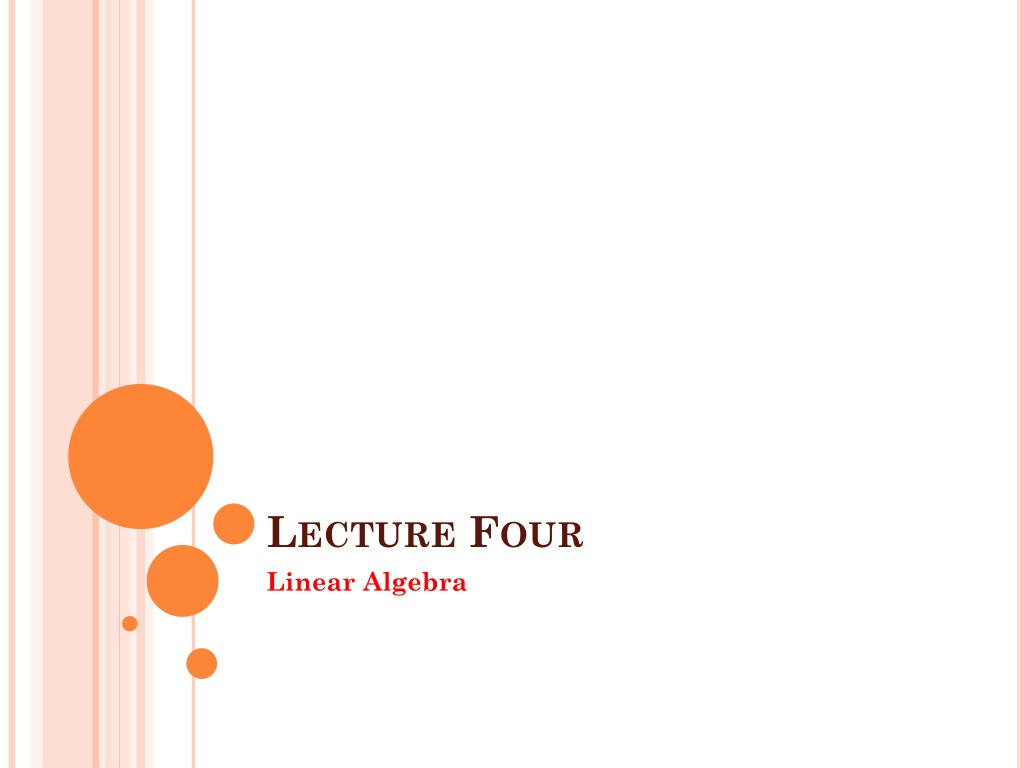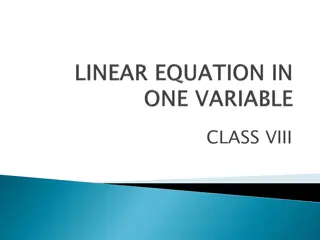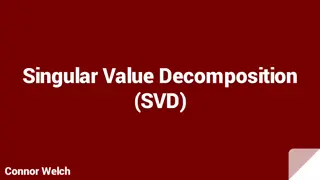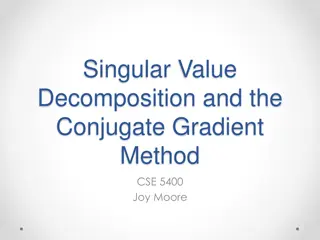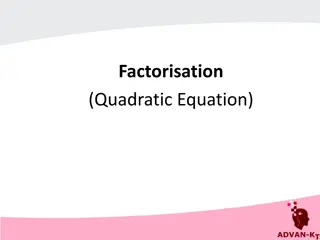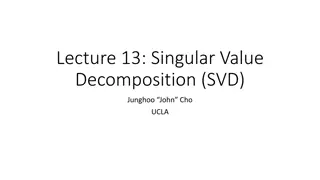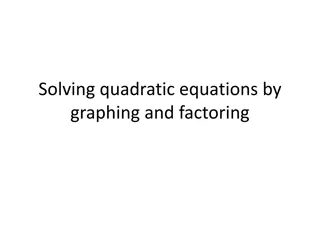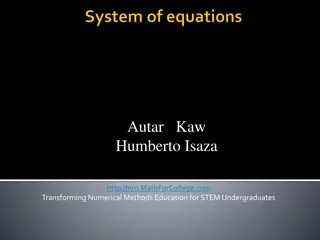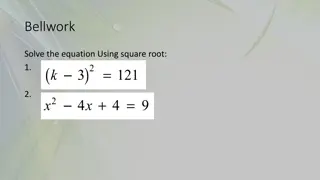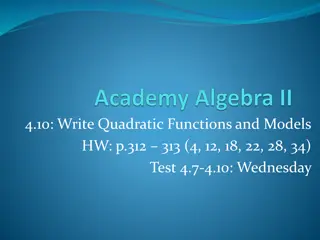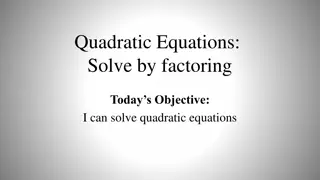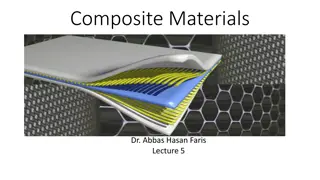Understanding Linear Algebra Concepts: Systems of Equations, Orthogonal Matrix, and Quadratic Forms
Explore the concepts of simultaneous linear equations, homogeneous and non-homogeneous systems, orthogonal matrices, and various types of quadratic forms in linear algebra. Learn about the characteristics of positive definite, semi-positive definite, and negative definite quadratic forms represented by symmetric matrices.
Download Presentation

Please find below an Image/Link to download the presentation.
The content on the website is provided AS IS for your information and personal use only. It may not be sold, licensed, or shared on other websites without obtaining consent from the author. Download presentation by click this link. If you encounter any issues during the download, it is possible that the publisher has removed the file from their server.
E N D
Presentation Transcript
LECTURE FOUR Linear Algebra
Simultaneous linear equations The set of equations with unknowns x1, x2, x3, , xn simultaneous linear equations in (n) unknowns. is called a system of m- and can be written in matrix form as:
And "non-homogeneous", There are (n-r+1) linearly independent solutions. For non-homogeneous system and (An n) is square and non-singular, i.e., there is unique solution of the system as: That means, matrix A has full rank i.e., rank(A)=n. Homogeneous System of Equations If C = 0 ; then the system is called: "homogeneous", and always there is consistent non-trivial solution. Iff rank(A)<n , there are (n-r) solutions. So, the solution of the system by using Generalized Inverse. if C 0 ; then the system is called: linearly independent
Orthogonal Matrix An orthogonal matrix A is a square matrix whose rows are a set of orthogonal vectors. Hence, A' is orthogonal too. Quadratic Form Quadratic form can be represented as: To maximizing / (minimizing) some function f(x) subjected a constrain: g(x) = c and for more general "Lagrange Multiplier". on values of x method is that of
Types of Quadratic Forms (Q.F.) Quadratic forms can be classified according to the nature of the characteristic roots iof matrix of the quadratic form itself. Positive Definite Quadratic Form A real symmetric square matrix An nis positive definite if the quadratic function represented with A is always positive, except for x = 0. That is: x'Ax > 0 , Consequently, characteristic values ( i> 0), i=1,2,3, ,n and this matrix A will be full rank i.e., rank(A)=(n). Furthermore, all principal minors are non-zero positive. matrix A has only positive non-zero
Semi-Positive Definite Quadratic Form A real symmetric square matrix An nis Semi-positive definite if the quadratic function represented with A is sometimes positive, except for x = 0. That is: x'Ax 0, Consequently, matrix A has non-negative characteristic values ( i 0), i=1,2,3, ,n and this matrix A will be less full rank i.e., rank(A)<(n).
Negative Definite Quadratic Form A real symmetric square matrix An nis negative definite if the quadratic function represented with A is always negative, except for x = 0. That is: x'Ax < 0, Consequently, matrix A has only negative characteristic values ( i< 0), i=1,2,3, ,n. Indefinite Quadratic Form Quadratic form is said to be indefinite if there is a real symmetric square matrix An n, if all of the characteristic roots iare represented by mixture values of positive, negative or zero.
